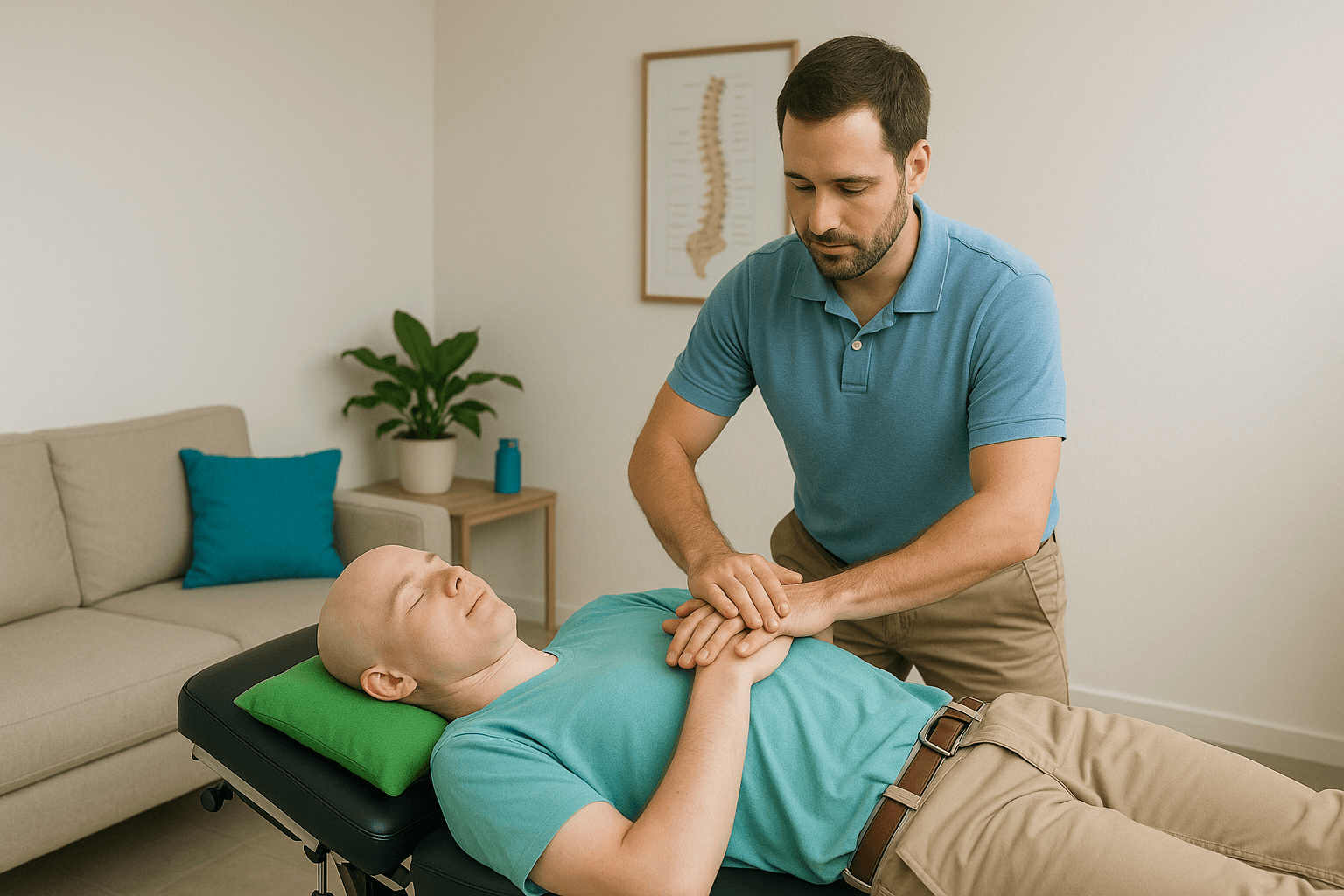Scoliosis, a condition marked by abnormal curvature of the spine, affects people of all ages and can significantly limit mobility and comfort. While traditional methods focus on bracing or surgery, scoliosis treatment with chiropractic care takes a different approach—addressing the root cause of spinal imbalance through precise, non-invasive structural corrections.
By improving alignment, mobility, and muscle balance, chiropractic-based care helps restore natural posture and reduce discomfort without relying on aggressive medical interventions. This holistic approach emphasizes long-term improvement and improved quality of life for patients living with scoliosis.
Jump To:
TLDR Quick Guide
- Scoliosis treatment with chiropractic focuses on spinal alignment to enhance mobility and reduce pain.
- Structural correction techniques restore balance and support natural healing.
- Chiropractic care works alongside physical therapy and posture correction exercises for lasting results.
- Ideal for mild to moderate scoliosis or post-surgical rehabilitation cases seeking non-invasive improvement.
What Is Scoliosis and How It Affects the Body
Scoliosis occurs when the spine curves laterally, often forming an “S” or “C” shape. This curvature can cause uneven shoulders, hip misalignment, and back discomfort, particularly during growth years or after long periods of poor posture.
Over time, these imbalances can restrict movement, cause muscular tension, and lead to chronic fatigue. Addressing spinal structure early is key to preventing progression and maintaining overall mobility.
How Chiropractic Care Supports Scoliosis Treatment
1. Structural Realignment
Chiropractic adjustments focus on restoring the spine’s natural alignment by gently mobilizing restricted joints. Each session targets the precise areas contributing to curvature, helping reduce uneven pressure on muscles and ligaments. Over time, this approach retrains the body to maintain a more balanced posture naturally.
2. Muscle and Postural Rebalancing
In addition to spinal adjustments, chiropractors often use posture-specific exercises to strengthen supporting muscles. This balance between flexibility and stability helps reduce the asymmetry that perpetuates curvature. As muscle tone improves, spinal mobility and endurance follow.
3. Pain Reduction and Mobility Restoration
By correcting joint restrictions and muscular imbalance, chiropractic care alleviates the pressure on nerves and discs. This often leads to improved range of motion and reduced inflammation. Many patients report noticeable relief and smoother movement after just a few sessions.
4. Complementary Rehabilitation
Chiropractic treatment can complement physiotherapy, stretching routines, and ergonomic corrections. Together, these create a synergistic effect that supports spinal health and slows curve progression. Consistent care helps patients stay active and pain-free.
Benefits of Scoliosis Treatment with Chiropractic
- Improved Posture: Rebalances the spine, helping the body hold an upright position with less strain.
- Enhanced Flexibility: Restores natural movement and eases stiffness caused by curvature.
- Reduced Pain: Decreases tension in muscles and joints associated with spinal distortion.
- Better Functionality: Increases overall strength, stability, and comfort in daily activities.
- Holistic Healing: Focuses on the entire musculoskeletal system, promoting natural recovery.
What to Expect During Chiropractic Scoliosis Treatment
Your chiropractor will begin with a comprehensive spinal assessment, often including posture scans and X-rays. The goal is to understand the severity, curve direction, and underlying structural imbalances.
Treatment typically includes gentle manual adjustments, muscle balancing exercises, and guidance for at-home care. Progress is monitored regularly to ensure that improvements in alignment lead to better comfort, flexibility, and stability.
At Upright Posture, for example, the approach focuses on Advanced BioStructural Correction™—a precise technique that restores natural spinal alignment by addressing the mechanical cause of curvature. This method is designed to improve both posture and overall body function for lasting relief.
Key Takeaways
- Scoliosis treatment with chiropractic care focuses on non-invasive correction and functional improvement.
- Structural realignment enhances posture, comfort, and movement without surgery or medication.
- Regular sessions and personalized exercises help prevent curve progression.
- Ideal for individuals seeking a holistic, long-term solution for spinal imbalance.
- Works best when guided by experienced structural chiropractors using evidence-based methods.
FAQs
Can chiropractic care completely fix scoliosis?
Chiropractic care doesn’t “cure” scoliosis, but it can significantly reduce symptoms and improve spinal function. By addressing misalignments, it helps stabilize the spine and prevent further curvature. Many patients experience reduced pain and enhanced quality of life.
Is chiropractic care safe for scoliosis?
Yes, when performed by trained professionals, chiropractic adjustments are gentle, precise, and safe. Specialized techniques focus on supporting spinal health without applying force to unstable areas. It’s an excellent non-invasive option for both adults and adolescents.
How long does scoliosis treatment with chiropractic take?
Treatment duration depends on the curve’s severity, age, and individual progress. Most patients begin noticing improvements in posture and comfort within a few weeks. Long-term results typically require consistent sessions and ongoing posture maintenance.
Does chiropractic treatment work for adults with scoliosis?
Absolutely. Adults can experience significant pain relief, improved mobility, and better alignment through targeted chiropractic care. While bone structure is less flexible with age, functional and postural gains remain achievable.
What is the difference between chiropractic care and surgery for scoliosis?
Surgery corrects severe spinal curves using hardware and fusion, while chiropractic care focuses on natural structural correction. Chiropractic is non-invasive and ideal for those seeking functional improvement without surgical risks. It supports body alignment, mobility, and comfort through progressive care.






